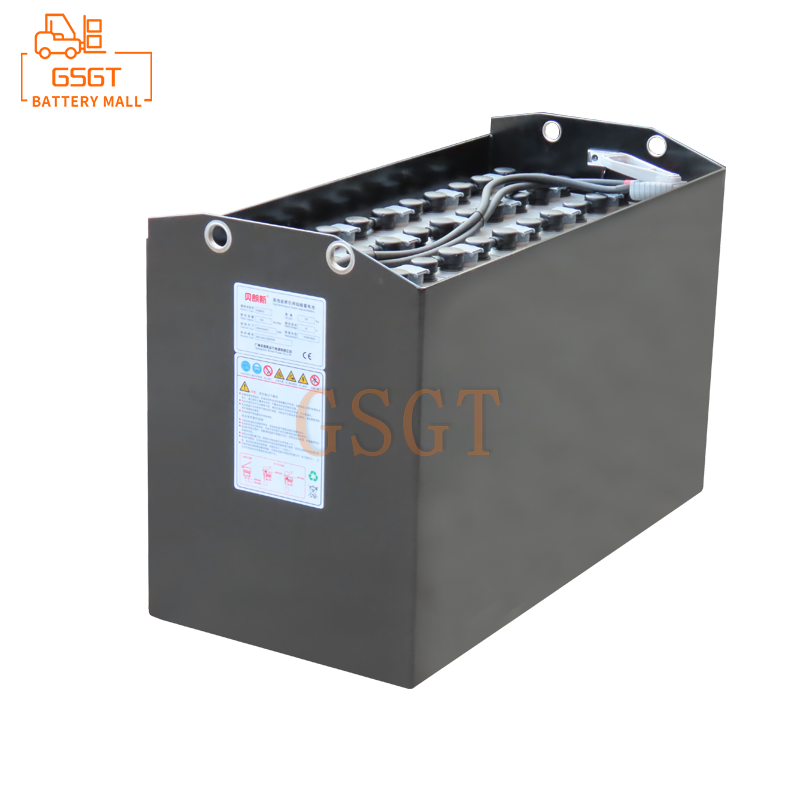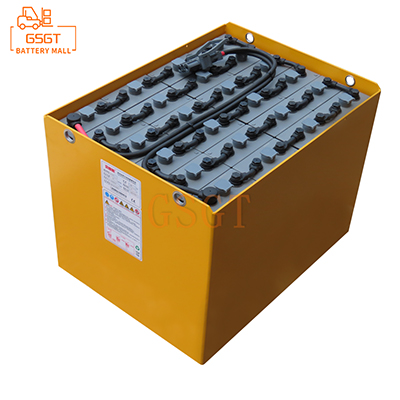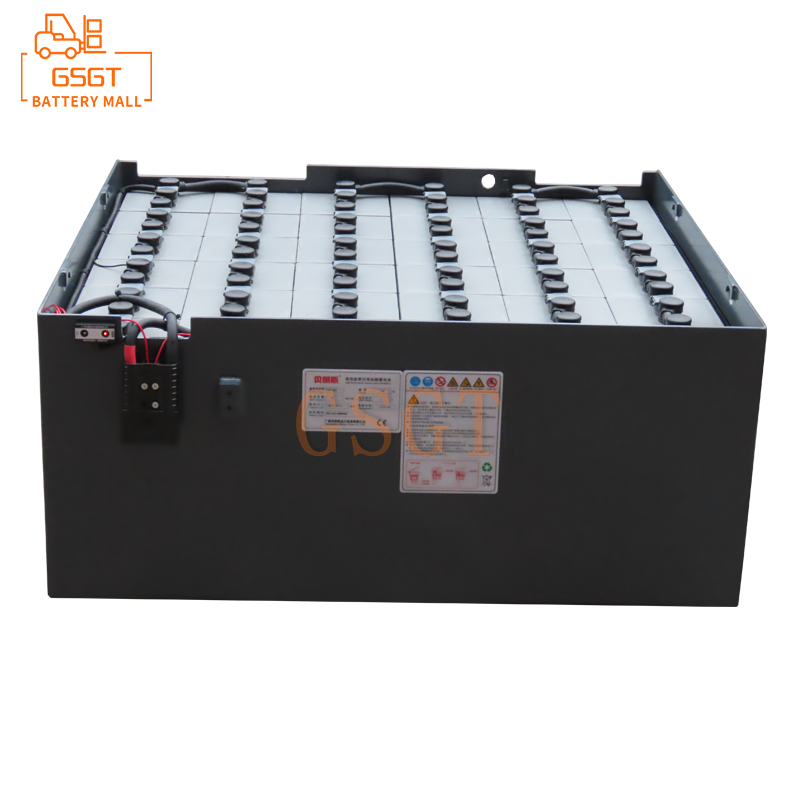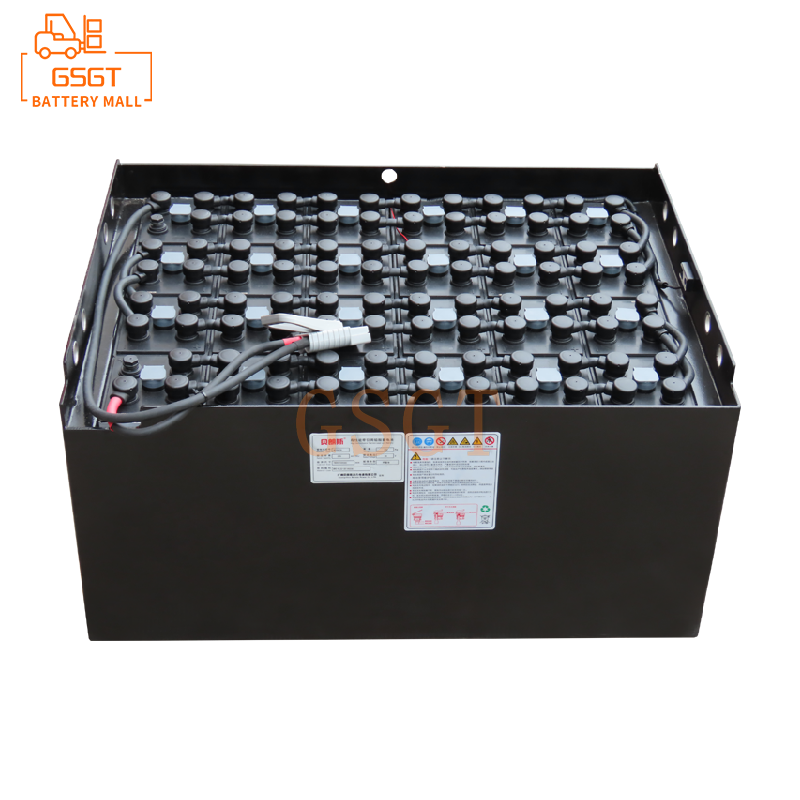Time:2025-06-07 12:59:52
Browse:593
Introduction
As a key power source for forklifts, the performance and lifespan of lead-acid batteries directly affect the efficiency and cost of forklifts. Throughout the entire life cycle of lead-acid batteries in forklifts, transportation and storage are of vital importance. However, they are often overlooked due to some seemingly minor factors, which can lead to a decline in battery performance, shortened service life, and even pose safety hazards. This article aims to deeply analyze the key points that are often overlooked in the transportation and storage of lead-acid batteries for forklifts, providing comprehensive and practical guidance for relevant practitioners.
Key points during the transportation process
The importance of packaging protection
When transporting lead-acid batteries for forklifts, appropriate packaging and protection are the basis for ensuring the safe arrival of the batteries at their destinations. Many people often only focus on the fixation of the battery itself, but neglect the selection and use of packaging materials. Lead-acid batteries contain corrosive electrolyte. Once leakage occurs during transportation, it will not only damage the battery but also cause serious harm to the transportation vehicle, other goods and the environment. Therefore, batteries must be packed in strong and acid-resistant containers, and the interior should be equipped with sufficient cushioning materials such as foam and sponge to prevent damage to the batteries due to collision and vibration during transportation. In addition, warning signs such as "Corrosive Substances" and "Handle with care" should be clearly marked on the outside of the packaging to remind the transporters to pay attention.
Control of the transportation environment
Temperature factor: Lead-acid batteries are highly sensitive to temperature. Extreme temperatures can significantly affect their performance and safety. When transported in a high-temperature environment, the chemical reactions inside the battery intensify, which may lead to overheating, bulging or even explosion of the battery. In a low-temperature environment, the viscosity of the electrolyte in the battery increases, the internal resistance rises, and the battery capacity will significantly decrease. However, in actual transportation, transport personnel often neglect the monitoring of the temperature of the transportation environment. Especially during the high-temperature periods of summer or in cold regions of winter, if the vehicle is not equipped with appropriate temperature control devices, the battery will be at great risk. Therefore, for long-distance transportation or transporting forklift lead-acid batteries in areas with extreme temperatures, transport vehicles with temperature control functions should be used to keep the temperature within the suitable range for battery transportation.
Humidity influence: Humidity is also a factor that is often overlooked during transportation. Although the lead-acid battery casing has a certain protective function, if the humidity of the transportation environment is too high, water droplets may condense on the battery surface, causing corrosion of the battery casing and electrodes, and affecting the electrical performance and safety of the battery. Especially when transporting in some humid coastal areas or during the rainy season, more attention should be paid to moisture-proofing. Transport vehicles should maintain good sealing performance. If necessary, desiccants can be placed inside the compartments to reduce humidity. At the same time, when loading and unloading batteries, it is necessary to avoid exposing them to a high-humidity environment for too long.
Handling Operation Specifications
When handling lead-acid batteries for forklifts, improper operation may directly cause physical damage to the batteries, thereby affecting their performance. Common incorrect operations include violent throwing, tilting during handling, and using inappropriate handling tools, etc. The internal structure of lead-acid batteries is rather complex, and components such as the plates are relatively fragile. Improper handling may cause the plates to deform or break, leading to internal short circuits in the battery and seriously affecting its lifespan. When handling, professional handling equipment such as forklifts and pallet trucks should be used, and it is necessary to ensure that the forks or forks of the handling equipment are of appropriate size and can stably lift the battery. During the handling process, keep the battery upright. It is strictly forbidden to tilt or invert it. Operators should receive professional training and strictly follow the operating procedures for handling. They should lift and place the batteries gently to avoid any impact or vibration.
Key points in the stored procedure
The selection of storage environment
Temperature and ventilation: Forklift lead-acid batteries should be stored in an environment with suitable temperature and good ventilation. Excessively high temperatures will accelerate the self-discharge process of the battery, resulting in a decrease in battery capacity. Poor ventilation may cause the hydrogen produced by the battery to accumulate, increasing the risk of explosion. However, many enterprises often neglect the ventilation conditions and temperature control of the warehouse when storing batteries. Some warehouses are located in high-temperature and muggy environments without ventilation equipment or air conditioning systems installed. If batteries are exposed to such conditions for a long time, their performance will be severely affected. Generally speaking, the ideal temperature range for battery storage is 10℃ to 30℃. The warehouse should be equipped with good ventilation facilities to ensure air circulation and promptly expel harmful gases such as hydrogen produced by batteries.
Humidity and dust prevention: High humidity environments can cause corrosion of the battery casing and electrodes, affecting the electrical connection performance of the battery. If dust and other impurities enter the battery, it may cause a short circuit and damage the battery. However, in actual storage, the humidity control and dust prevention measures in the warehouse are often inadequate. For instance, some warehouses are close to water sources or located in damp basements without taking effective moisture-proof measures, and the surface of the batteries will soon show signs of corrosion. In addition, if there is a lot of dust in the warehouse and it is not cleaned regularly, a large amount of dust will accumulate on the surface of the battery. During the charging and discharging process of the battery, the dust may be sucked into the battery, causing malfunctions.
Management of the charging and discharging states of batteries
Charging state storage: When storing forklift lead-acid batteries, they should be kept in a certain charging state to avoid being in a state of low charge for a long time. If a battery is stored in a state of low charge for a long time, lead sulfate crystals will form on the surface of the plates. These crystals are difficult to be reduced during subsequent charging processes, which will lead to a permanent decline in battery capacity, known as the "sulfation" phenomenon. However, many enterprises do not regularly charge and maintain the batteries when they are not in use for a long time. It is generally recommended that for forklift lead-acid batteries that have been stored for a long time, the battery should be fully charged first, and then a supplementary charge should be carried out once a month to maintain the battery's activity.
Discharge state control: Before storage, make sure the battery is not over-discharged. Excessive discharge can cause an imbalance in the chemical reactions inside the battery and accelerate the damage of the plates. However, in actual operation, sometimes due to the forklift not being charged in time after use, the battery is directly stored in a deeply discharged state. Therefore, before storing the lead-acid batteries of forklifts, the discharge status of the batteries should be checked. If the battery power is below 50%, it should be charged to about 80% - 90% first before storage.
Regular inspection and maintenance during storage
Visual inspection: During the storage period of the battery, regular visual inspections should be conducted on the battery to check if there are any cracks, deformations, leaks or other conditions on the battery casing. The battery casing is an important barrier to protect the internal structure of the battery and the electrolyte. Once there is a problem with the casing, the electrolyte may leak, which not only damages the battery but also poses a threat to the surrounding environment. However, in actual storage, many enterprises have not established a regular appearance inspection system. Often, it is not until the battery malfunctions seriously that the casing is found to have been damaged. It is generally recommended to conduct a visual inspection of the battery at least once a week to promptly identify and address any issues.
Electrolyte inspection: The electrolyte level and density of lead-acid batteries have a significant impact on battery performance. During storage, the electrolyte level may drop due to evaporation and other reasons, and its density may also change. If the electrolyte level is too low, the plates will be exposed to the air, leading to oxidation and sulfidation of the plates. Abnormal density of the electrolyte will affect the charging and discharging performance of the battery. However, many enterprises seldom check the condition of the electrolyte during battery storage. Therefore, the electrolyte level should be checked regularly, generally at least once a month. If the level is lower than the standard mark, distilled water or special electrolyte replenishment solution should be added. Meanwhile, the density of the electrolyte should be measured regularly with a hydrometer to ensure it remains within the normal range. Generally, the standard density of the electrolyte at 25℃ is 1.28g/cm³.
Electrical performance testing: Regularly conducting electrical performance testing on batteries in storage, such as measuring battery voltage, internal resistance and other parameters, can promptly identify potential performance issues of the batteries. The changes in battery voltage and internal resistance can reflect the health status of the battery. If the battery voltage is too low or the internal resistance is too high, it indicates that the battery may have a fault and requires further inspection and handling. However, in actual operation, many enterprises lack the awareness and equipment to conduct electrical performance tests on storage batteries. It is recommended to conduct a comprehensive electrical performance test of the forklift lead-acid batteries in storage once every quarter. Through professional battery testing equipment, such as battery internal resistance testers and battery capacity testers, the batteries can be inspected and evaluated.
Conclusion
In the transportation and storage of lead-acid batteries for forklifts, many seemingly minor factors actually have a significant impact on battery performance and lifespan. From packaging protection, environmental control, and handling operation norms during transportation to environmental selection, charging and discharging status management, and regular inspection and maintenance during storage, every link requires sufficient attention from relevant practitioners. Only by comprehensively and meticulously controlling these easily overlooked key points can we ensure that forklift lead-acid batteries maintain a good performance state during transportation and storage, extend the battery's service life, reduce usage costs, and at the same time guarantee safety during transportation and storage, avoiding various accidents and losses caused by battery issues.

$2450

$3405

$4045

$5710

MESSAGE
Professional And Efficient
Security
Affordable Price
Professional Services